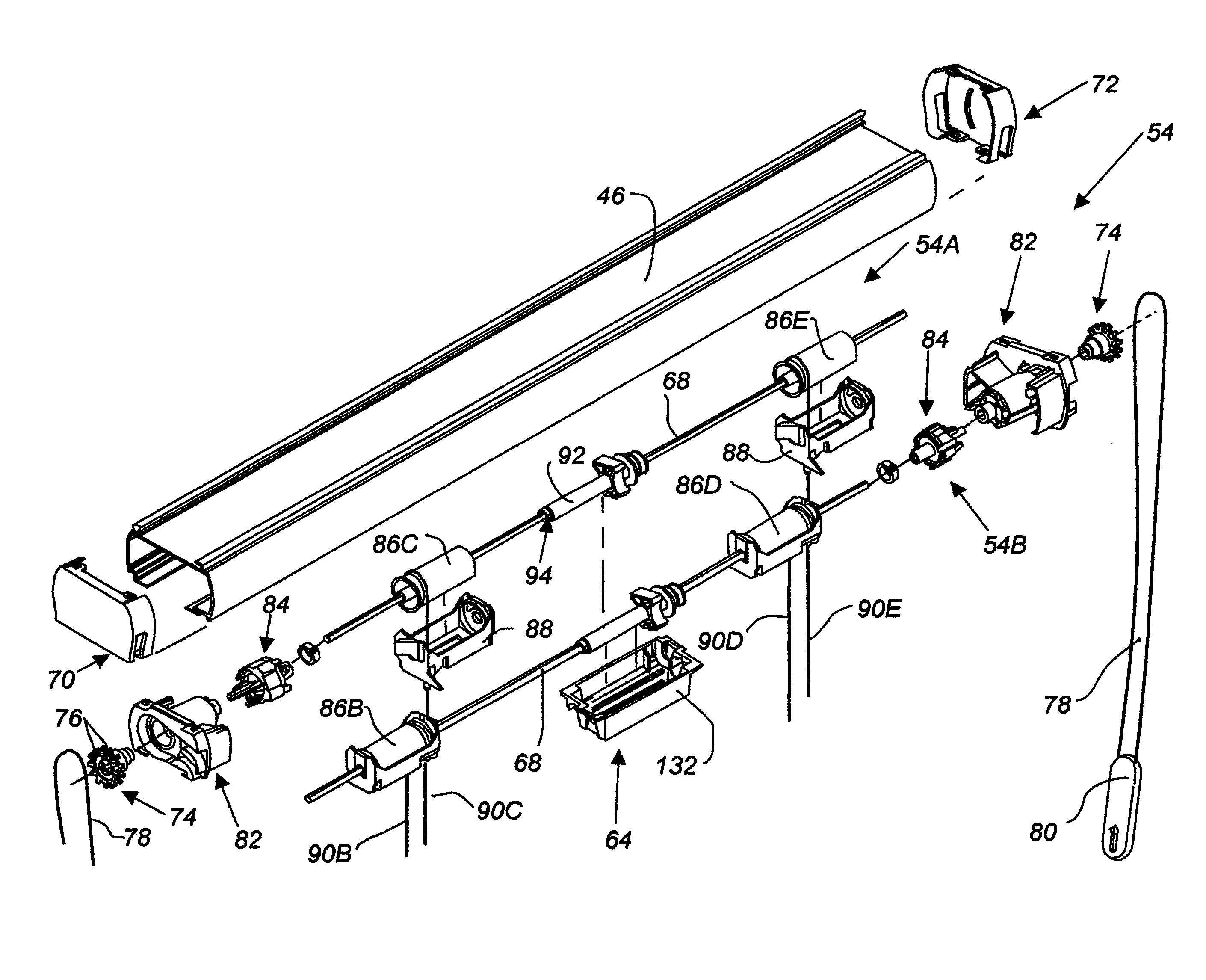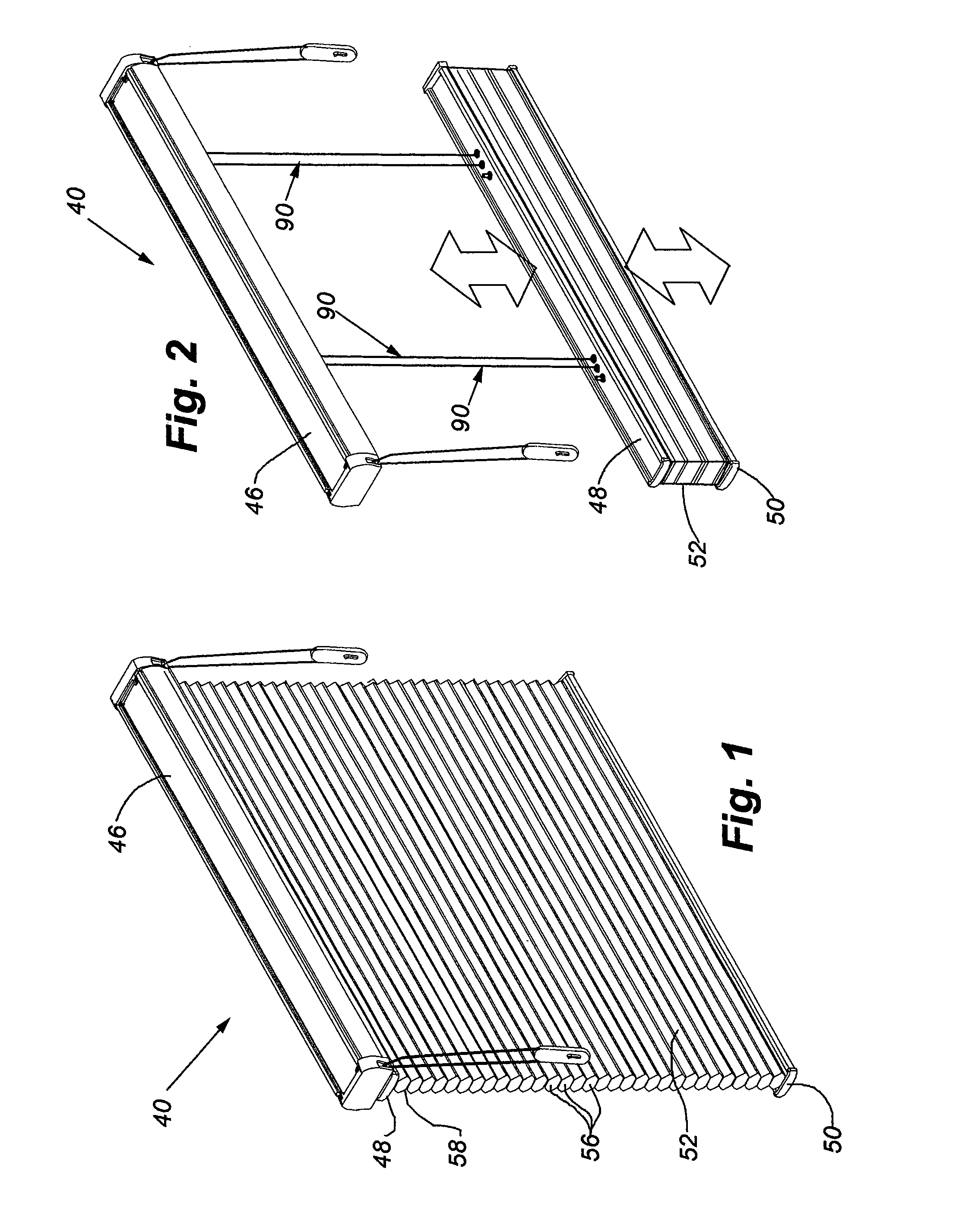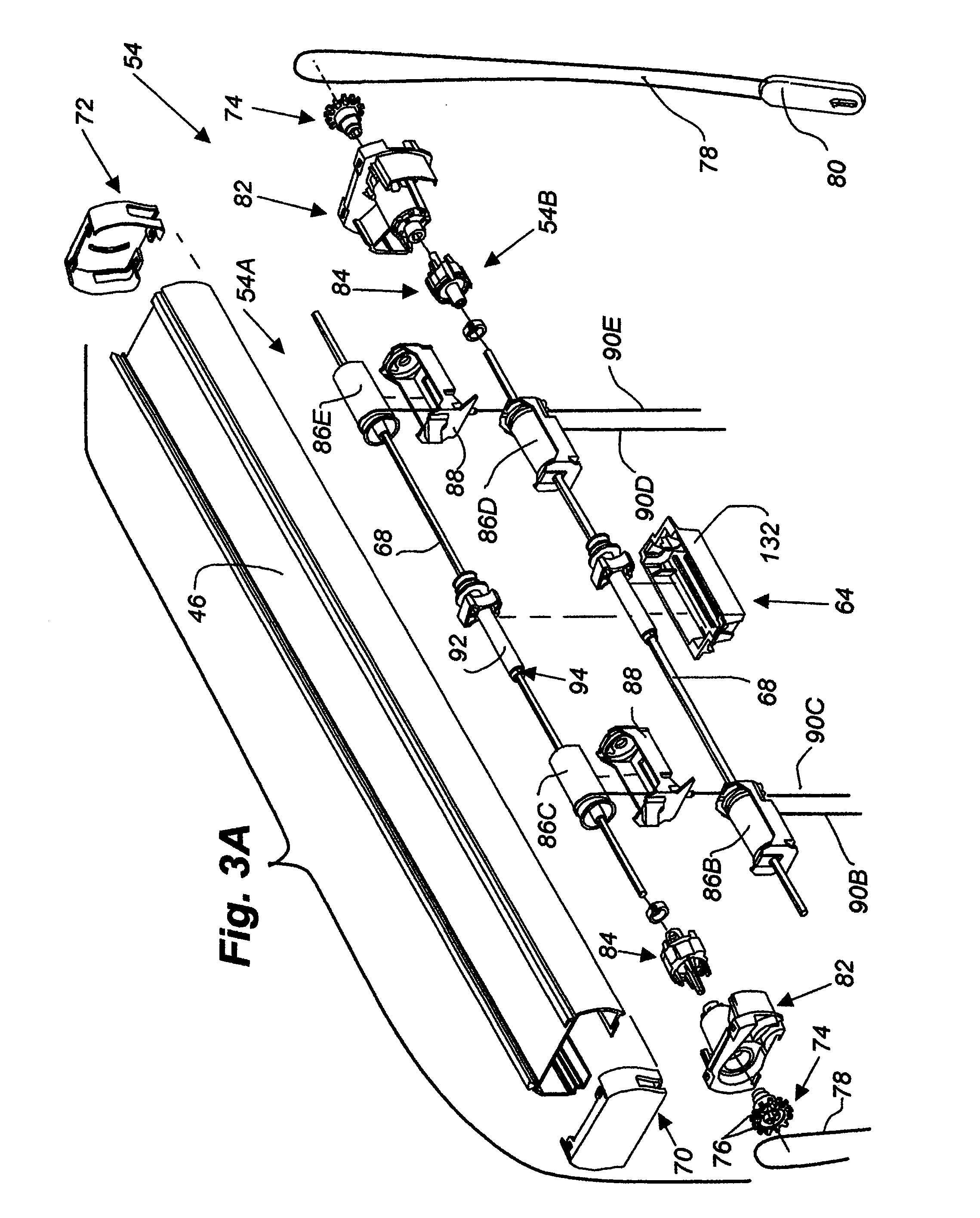Cord tension control for top down/bottom up covering for architectural openings
a technology of top down/bottom up covering and tension control, which is applied in the direction of shutters/movable grilles, door/window protective devices, wing arrangements, etc., can solve problems such as malfunction of coverings, and achieve the effect of avoiding entanglement of lift cords
- Summary
- Abstract
- Description
- Claims
- Application Information
AI Technical Summary
Benefits of technology
Problems solved by technology
Method used
Image
Examples
second embodiment
[0083]Looking at FIGS. 17A-18, this arrangement 150 of the top down / bottom up covering can be seen to include a headrail 46 identical to that described in connection with the first arrangement, a top panel 156 of collapsible shade material, and a bottom panel 158 of collapsible shade material. The top panel 156 of shade material has its uppermost cell suspended from the headrail 46 in a conventional manner, such as with an anchor strip (not shown), and its bottom edge connected to a top rail 160 through use of an anchor strip through the lowermost cell of the top panel. The uppermost cell of the bottom panel 158 is connected to the lower surface of a middle rail 162, again with an anchor strip (not shown) or through any other suitable system, with the bottom or lowermost cell of the bottom panel being connected to a bottom rail 164 in a similar manner. The bottom rail of this arrangement of the covering is secured to the threshold 166 (FIGS. 21A-21E) of the framework of the architec...
first embodiment
[0088]The cord tension control system 152, as mentioned, further includes an abutment nut 120 on each threaded shaft with the abutment nuts, as mentioned previously, being identical to those described in connection with the cord tension control system. The threaded shafts are rotatably supported within an open topped housing 200 shown best in FIG. 27 and shown in FIGS. 24-26 in operative relationship with threaded shafts 174A and 174B. As seen in FIG. 22, however, it will be appreciated the threaded shafts are offset longitudinally of each other similar to the first described embodiment and have the opposite ends of the threaded shafts rotatably received in cradles 202 that positively position the threaded shafts relative to the housing. The housing, of course, is fixedly positioned within the headrail 46 in any suitable manner.
[0089]Referring first to the upper threaded shaft 174A, as viewed in FIG. 22 as well as referencing FIGS. 24-27, it will be appreciated the housing 200 has a...
PUM
 Login to View More
Login to View More Abstract
Description
Claims
Application Information
 Login to View More
Login to View More - R&D Engineer
- R&D Manager
- IP Professional
- Industry Leading Data Capabilities
- Powerful AI technology
- Patent DNA Extraction
Browse by: Latest US Patents, China's latest patents, Technical Efficacy Thesaurus, Application Domain, Technology Topic, Popular Technical Reports.
© 2024 PatSnap. All rights reserved.Legal|Privacy policy|Modern Slavery Act Transparency Statement|Sitemap|About US| Contact US: help@patsnap.com










